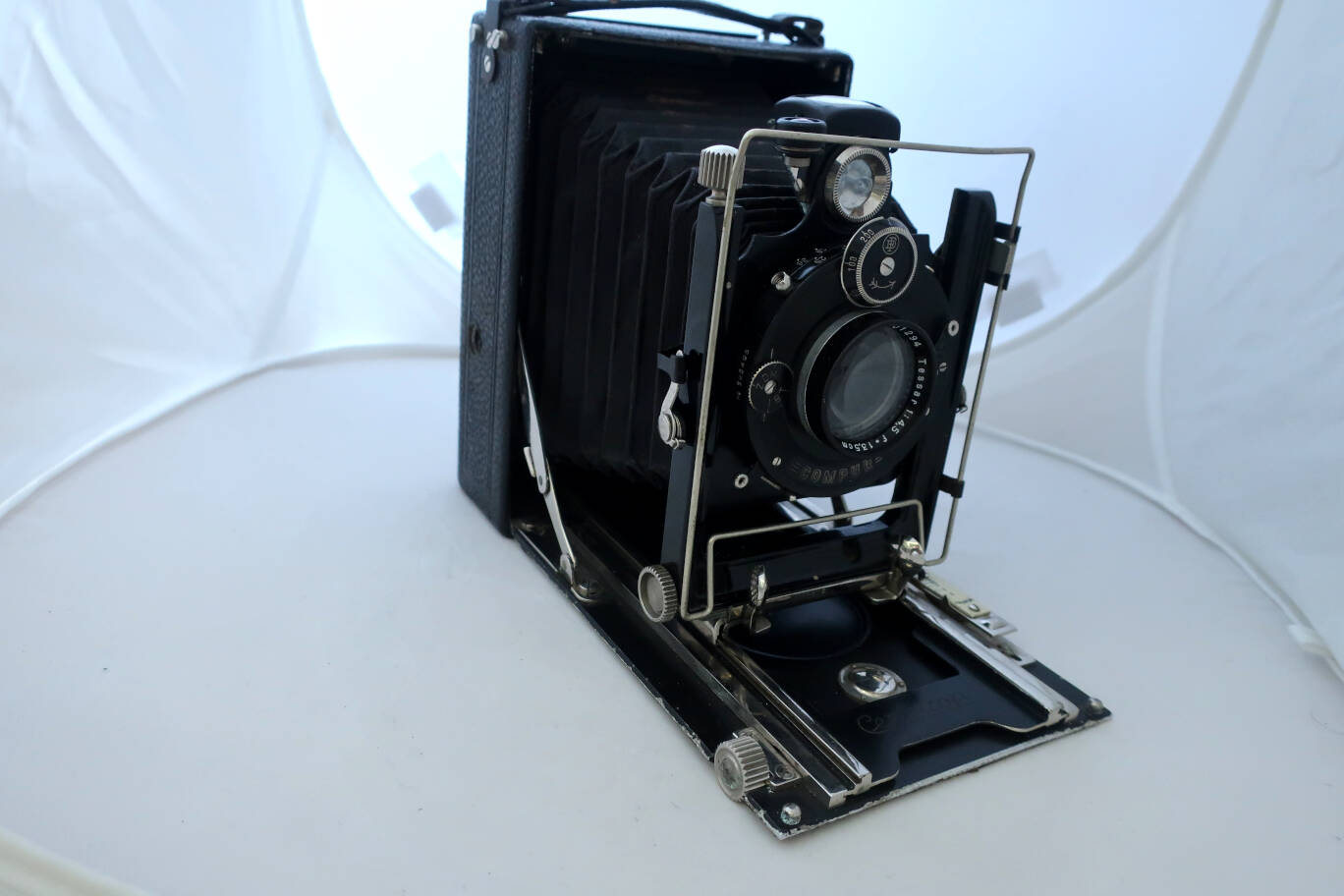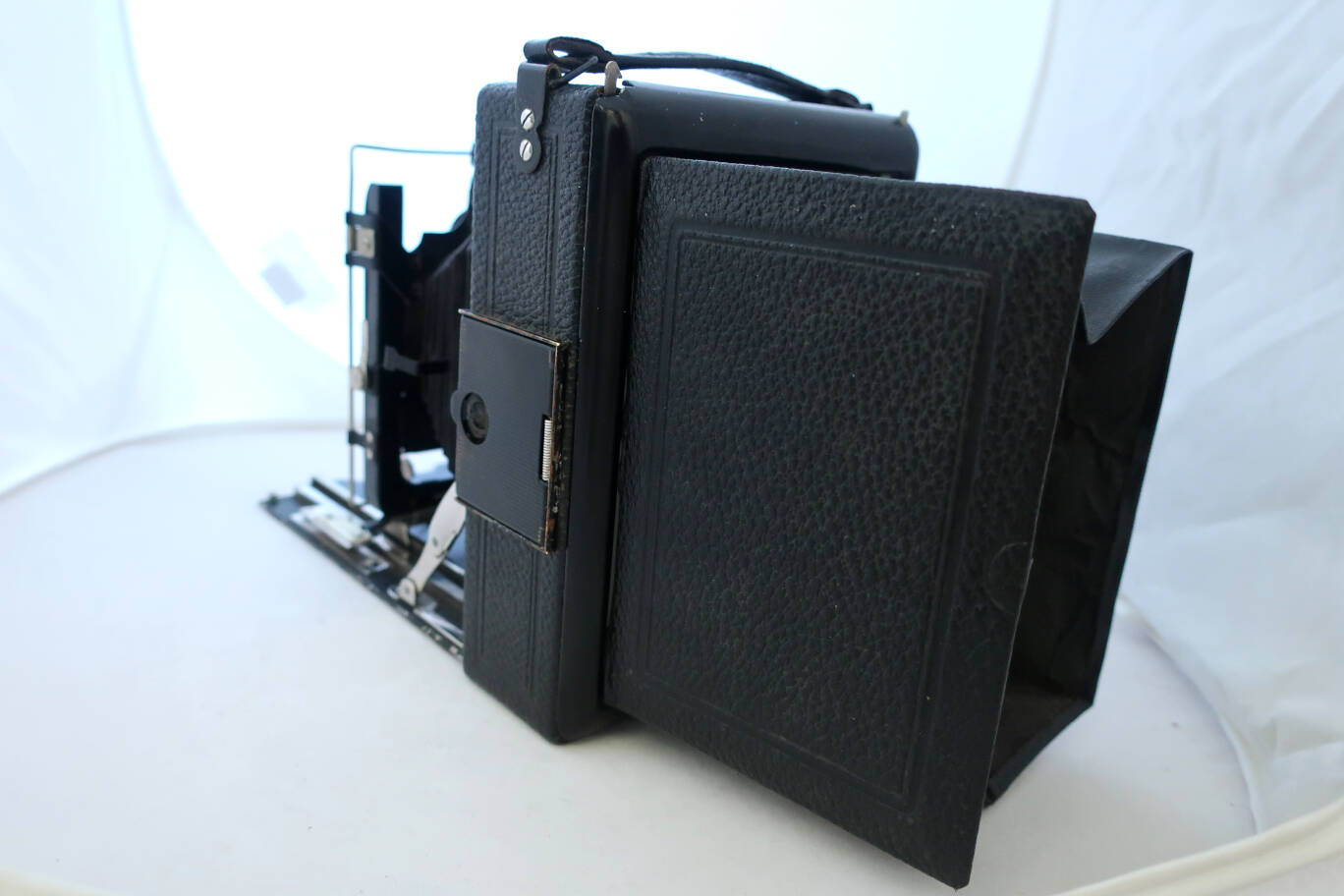OddCameras.com
Certotrop 9x12
The Certotrop cameras were produced between 1927 (some say 1925) and
1941 by Certo, Dresden. They were made in different formats, 6.5x9,
9x12 and 10x15. In 1931 Certo added the possibility to interchange the
lens/shutter units. The name suggests a "tropical" version of a
camera, resistant to humidity, but this isn't the case for the
Certotrop.
The Certotrops are top level cameras with luminous lenses and double
extension. I own 2 of these in 9x12 format (and one 6.5x9). Here is
the first:
Lens: Zeiss Tessar 1:4.5 13.5cm, F4.5-36
Shutter:
Compur 1-1/200 B T (nw)
Weight: 1174gr.
Size: 165x118x52
Some photos:

Camera closed. Tripod socket on the bed (and one on the bottom of the
housing).

Seen from the right. Brilliant finder with spirit level, can be switched
to landscape format, but there is little room, so you have to release the
bellows. Distance scale on the bed.

Seen from the left. The knob of the bed advance has to be pulled to
unblock and pushed to block the bed movement. Tripod socket for landscape
format on the housing.

Lens and shutter.

Rise/fall and shift movements are possible. There is a wire frame
on this camera and an eyepiece.

The camera has double extension

Back, hood open.

Ground glass deposed.
This camera has a rapid change back. You don't have to slide the backs or
holders all the way in from the top, just insert the bottom edge at the
bottom of the back and swing it into place.
Now my second Certotrop:
Lens: Steinheil
Doppelanastigmat Unofokal 1:4.5 13.5cm, F4.5-36
Shutter:
Compur 1-1/200 B T (working)
2nd lens: C.E.Riese Doppelanastigmat 1:6.8 150mm
Shutter: Compound (?) 1-1/250 working
Weight: 1165gr.
Size: 155x112x47
Some photos:

A nice set with case, holder and second lens.

Camera closed. No
tripod socket on the bed (but one on the bottom of the housing).

Seen from the right. Brilliant finder with spirit level, can be switched
to landscape format, but there is little
room, so you have to release the bellows. Distance scale on the
bed. No wire finder on this one. This camera also has rise/fall and double
extension.

Seen from the left. The knob for the bed advance has to be pulled to
unblock and pushed to block the bed movement. Tripod socket for landscape
format on the housing. I do not know what the little scale on the bed is
for. It has an infinity mark in the middle and the letters H and L, but
there is no pointer...

Lens and shutter.

The second lens and its shutter.

Ground glass deposed,
no rapid change system.
The
camera opens via a button, the first on the side near the top, the
second on the top itself. Lower the bed until it clicks into place.
Squeeze the tabs on the front standard and extend, there is an
automatic stop. You can either use the finder and the distance
indications or the ground glass to focus. Set shutter speed and
aperture, cock the shutter. Put a film holder into place, lift the
dark slide and take your photo. Do not forget to put the dark slide
again. To shut the camera, push the front standard over the end of the
bed into the housing, press the hinges of the bed and it will close.
These cameras are
about a century old. The lenses are uncoated and the shutters are simple.
Nevertheless they are a good entry into large format. The cameras are
leightweight and very compact seen the film size. 9x12 film is still
made. Most of these cameras are very cheap, the Certos tend to be
more expensive, most are simple to use and can give a lot of fun.















